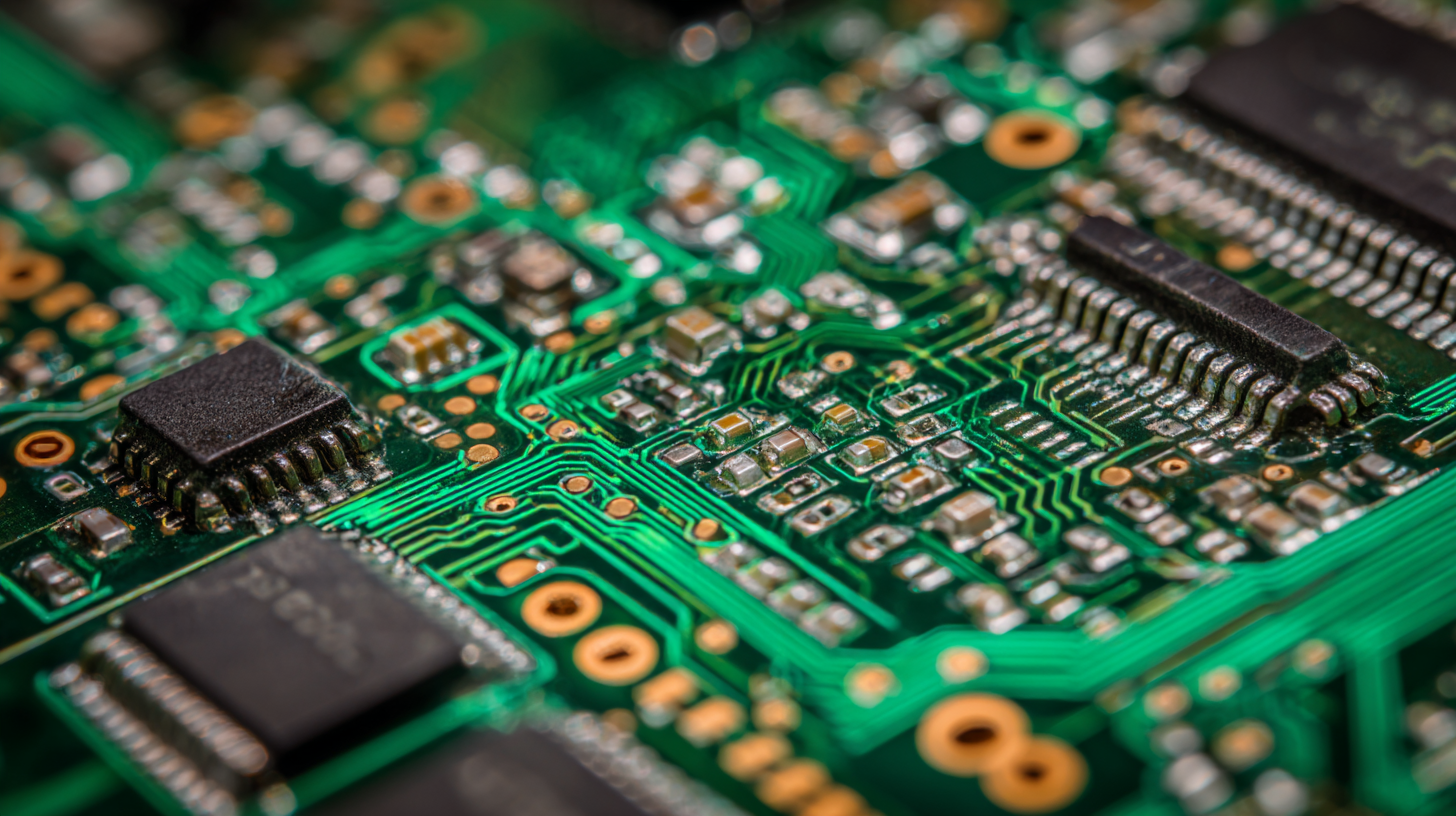In today's competitive electronics landscape, achieving industry standards in circuit board assembly is crucial for maximizing efficiency and ensuring product reliability. According to a recent report by IPC, the association connecting electronics industries, an estimated 29% of electronic manufacturers experienced reduced production costs and improved quality by adhering to recognized assembly standards. Furthermore, the global market for circuit board assembly is projected to reach $27 billion by 2024, underscoring the importance of quality assurance and certification in this field. As technologies evolve and consumer demands intensify, companies that prioritize compliance with rigorous industry standards will not only enhance their operational performance but also gain a significant competitive edge. Ensuring best practices in circuit board assembly is no longer an option but a necessity to thrive in a rapidly changing market.

The printed circuit board (PCB) market is witnessing remarkable growth, with a projected market size reaching approximately $80 billion by 2026, driven by increasing demands across various sectors such as automotive, consumer electronics, and telecommunications. The advancing technology in PCB assembly is pivotal in enhancing manufacturing efficiency and product quality. In the automotive sector, for example, the integration of advanced driver-assistance systems (ADAS) significantly relies on multilayer PCBs, which can accommodate complex circuitry and enhance vehicle safety features.
Case studies reveal how the implementation of high-density interconnect (HDI) boards has revolutionized electronic designs, enabling miniaturization while increasing functionality. The healthcare industry benefits from flexible PCBs, which facilitate compact medical devices that require rigorous performance in tight spaces. As the global electronics manufacturing landscape evolves, continuous innovation, such as those highlighted at events like NEPCON China, showcases the industry's shift towards sustainable practices and digital solutions. Companies are investing in green materials and simulation technologies to foster efficiency and reliability, ensuring they remain competitive in the face of an impending technological revolution.
| Industry Application | Efficiency Metric | Result Achieved | Best Practices Implemented |
|---|---|---|---|
| Consumer Electronics | Production Cycle Time | 20% Reduction | Automated Assembly Line Integration |
| Automotive | Defect Rate | 15% Improvement | Enhanced Quality Control Systems |
| Medical Devices | Assembly Accuracy | 98% Precision | Strict Compliance with ISO Standards |
| Telecommunications | Time to Market | 30% Faster | Agile Production Strategies |
In circuit board manufacturing, achieving maximum efficiency requires a keen focus on key performance metrics. Reports indicate that optimizing yield rates and minimizing defect densities are crucial drivers for performance. For instance, a study by IPC shows that companies achieving a yield rate above 95% can significantly reduce costs while improving time-to-market. It’s crucial for manufacturers to monitor these metrics regularly to ensure they meet industry standards, which can lead directly to higher profitability and customer satisfaction.
Tip: Regularly analyze your defect rates and implement root cause analysis to identify and eliminate issues in your manufacturing process.
Moreover, energy consumption is another critical performance metric. According to a 2022 report from Gartner, manufacturers that have implemented energy-efficient practices have reduced operational costs by up to 20%. Efficiency in resource allocation not only benefits the bottom line but also contributes to sustainability goals that the industry is increasingly prioritizing.
Tip: Invest in equipment that has higher energy efficiency ratings and establish a robust energy management system to track consumption patterns.
In the realm of electronics manufacturing, adhering to industry standards in circuit board assembly is paramount for enhancing operational efficiency. One of the top reasons to embrace these standards is quality assurance. According to a report by IPC, implementing established guidelines can reduce defects by up to 40%, which directly translates to significant cost savings and accelerated time-to-market. High-quality assembly practices not only boost reliability but also reinforce customer trust in the final product, thus enhancing brand reputation.
Another compelling reason to adopt industry standards is the improvement in compatibility with various components and technologies. A study by Deloitte highlights that companies leveraging standardized practices experience a 25% increase in their ability to integrate new technologies swiftly. This agility is crucial in an ever-evolving marketplace where consumer expectations continuously rise. Furthermore, standardization fosters better communication and collaboration among teams, helping to streamline processes and reduce the risk of errors, ultimately leading to a more efficient operation. By investing in industry standards, businesses can position themselves at the forefront of innovation while maintaining a strong competitive edge.

The realm of circuit board assembly (CBA) is undergoing significant transformations, driven by innovative technologies that enhance efficiency and precision. With the integration of automation and advanced manufacturing techniques, companies are now able to produce high-quality circuit boards at an unprecedented speed. Automated systems streamline workflows, minimize human error, and allow for constant monitoring of production processes, leading to a more robust output.

To maximize the efficiency of your circuit board assembly, consider investing in smart manufacturing solutions. These systems utilize data analytics to optimize production schedules and resource allocation. Implementing real-time monitoring tools can also help identify bottlenecks quickly and adapt processes on the fly, leading to smoother operations.
Another key tip is to embrace advanced materials that enhance performance. For instance, utilizing high-frequency laminate materials can improve signal integrity, while adopting lead-free soldering techniques ensures compliance with environmental standards. By staying abreast of these cutting-edge technologies, companies can not only meet industry standards but also gain a competitive edge in the fast-evolving electronics market.
The landscape of circuit board assembly is rapidly evolving, driven by emerging trends and the establishment of industry standards aimed at maximizing efficiency. The printed circuit board (PCB) assembly market is projected to reach a staggering $50 billion by 2032, with a compound annual growth rate (CAGR) of 3.44%. This growth is reflective of the relentless innovation in the sector, where advanced techniques and materials are playing a crucial role in enhancing assembly processes.
Moreover, the integration of advanced components, such as Cable Connection Systems (CCS), is setting new standards for performance, particularly in electric vehicle applications. These systems offer essential features like overcurrent protection and high-voltage interconnections, signifying the industry's shift towards smarter and more efficient design solutions. As we navigate these transitions, the upcoming NEPCON ASIA 2024 event will further explore these topics, featuring over 100 experts sharing insights about the future of electronic manufacturing. With such advancements on the horizon, the industry is poised for transformative growth and innovation in circuit board assembly practices.
This chart illustrates the efficiency metrics of circuit board assembly processes across various standards in the industry. The data reflects the average efficiency percentage achieved by different methodologies in the last year.

